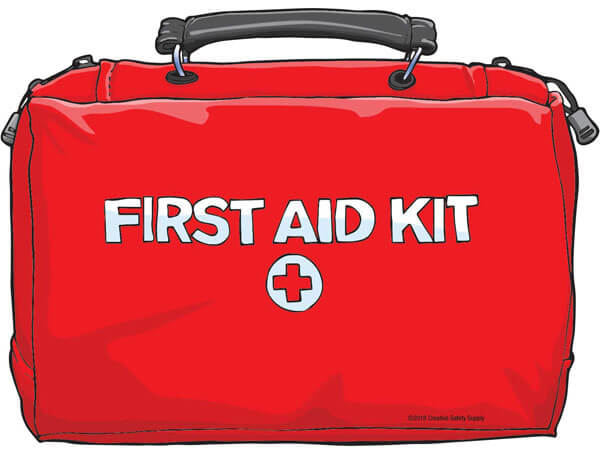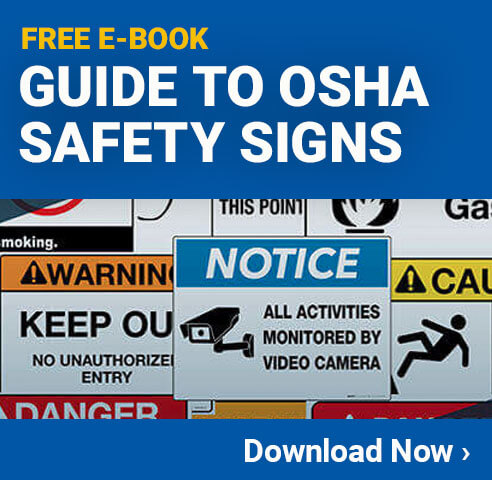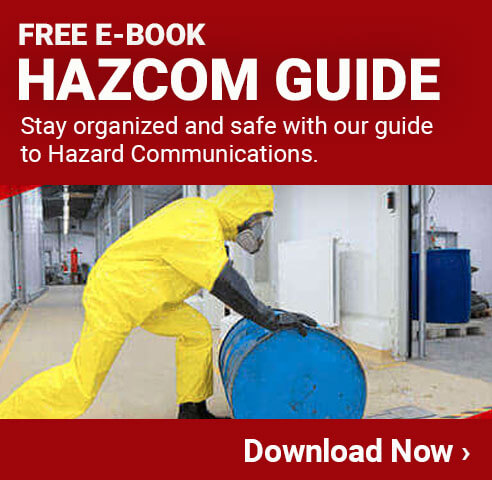
No business wants to be in the position where they must write an accident report. In fact, we go to great lengths keep our employees safe and our facilities without incident. We equip our facilities with safety signs, we create workshops and courses to better educate workers about safe practices, and we schedule monthly meetings with safety managers to brainstorm about ways to stay injury-free. We hire consultants to assess our facilities, we have managers do regular walk-throughs to see production lines for themselves to make sure regulations are being followed.
Know your OSHA incident rate?
The OSHA Incident Rate Calculator helps you find the rate of recordable injuries.
Despite all of the preventative measures companies take to avoid calamity, an unfortunate fact is that at some point, most businesses will experience a workplace accident of some kind. According to a report released by the Bureau of Labor Statistics, somewhere around 2.9 million nonfatal workplace accidents occurred in 2016.

Though accident prevention is a crucial part of a successful, smart business, it's equally important to know how to handle a work-related injury or illness. The way these incidents are handled are a vital step in getting past them and improving the safety of your business. OSHA, which stands for Occupational Safety and Health Administration, is the government entity responsible for enforcing national workplace standards. OSHA has specific regulations surrounding workplace injury and illness reporting.
Report the Employee Injury or Illness
With the exception of a few, partially exempt industries (real estate, retail, service, insurance and finance) most employers are required by law to record on-the-job injuries and illnesses using the proper Occupational Health and Safety Administration form. These forms help employers, workers, and OSHA understand and assess a facility's safety, gain knowledge of industry hazards, and work toward preventing these injuries from occurring in the future.
Documentation also helps protect both businesses and workers in instances where legal teams get involved. These reports arm companies and employees with a summary of what exactly happened.
What Situations Warrant Reporting?
OSHA requires these accident forms be documented and posted under the following circumstances:
- Any work-related fatality
- Any work-related injury or illness that results in loss of consciousness, days away from work, limited ability to do work, or transfer to a different position
- Any work-related injury or illness requiring medical treatment beyond the contents of the first aid kit
- Any work-related, diagnosed case of cancer, chronic irreversible disease, broken bones or teeth, or punctured eardrums
instances where employees lose their lives must be reported to OSHA within 8 hours. If an accident results in an amputation, loss of an eye, or hospitalization, the employer is required to file within 24 hours.
Note: as of January 2017, OHSA requires certain employers to electronically submit injury and illness data already required on their onsite Injury and Illness forms. Make sure your business is compliant with this new requirement. Additionally, all work-related injuries and illnesses must be recorded in the OSHA 300 Logs and must be posted in a location visible and accessible to all employees (break rooms, clock-in areas, etc.). These logs must match what OSHA has on file. Discrepancies in these logs could result in fines or other penalties.
OSHA's Final Rule on Recordkeeping 2019
Earlier this year, OSHA published a final rule rolling back requirements on electronic recordkeeping; the final rule has been effective since February 25,2019.
OSHA’s final rule removes the requirement to electronically submit information from the OSHA Form 300: Log of Work-Related Injuries and Illnesses and OSHA Form 301: Injury and Illness Incident Report, leaving OSHA Form 300: Summary of Work-Related Injuries and Illnesses as the only form employers are obligated to submit. Although employers will no longer need to submit detailed logs annually, OSHA still requires employers to keep and maintain all three forms for five years. The change is meant to protect workers privacy and facilities will still need to provide inspectors or auditors with updated information.
Make a Plan of Action
Now that we know what kind of injuries require reporting, it's important to have a system in place to handle work-related accidents.
Accidents happen in a heartbeat. Since the moments after an accident are the most crucial, the need to have a plan in place for accidents is paramount.
- Prepare for the worst. Create a plan of action in the event of a workplace injury. This plan should be devised by your safety manager, but if your business doesn't have someone in this role, appoint someone with this responsibility. It could be your office manager, your COO, the warehouse supervisor-whomever makes the most sense for your company. They should be fully prepared to call first responders, arrange transportation to emergency rooms, call workers, compensation insurance agent, inform closest OSHA Area Office, etc.
- Act fast. It's imperative to take action immediately. After the injured worker's health needs have been tended, do the necessary cleanup to ensure no one else gets hurt. Bringing the workspace back to its normal state will help workers recover from the disturbance of a work-related accident.
- Be Specific. Be Thorough. Take your time and be as complete as you can when filling out the OSHA accident form. Remember to include all vital information: date, time, where in the facility the accident occurred, what happened, and who was involved.
Improve Safety
As your business recovers and returns to normal in the wake of a serious injury or illness, set aside some time to debrief. Brainstorm how to improve safety and prevent future injuries. This might be a good time for management to take a Gemba walk, or implement other Lean manufacturing into your company's production process.
After an accident, the best way to restore morale and effectiveness is to take actions that ensure the same thing won't happen again.
OSHA Inspections
While a work-related injury doesn't always result in an OSHA inspection, it's prudent to have your facility inspection-ready.
An OSHA inspection (also called compliance audits) can happen for many different reasons, but one high priority for OSHA visits is work-related severe injuries or illnesses.
For your consideration:
- There are two kinds of OSHA inspections - Phone/fax investigations and on-site investigations.
- Phone/fax investigations consist of a call from OSHA in which the employer lays out safety and health hazards of facility and how the company is handling them. The employer must also fax a detailed report on any current hazards and noting corrective plan of action within five days of the call.
- On-site inspections are more involved, and consist of three stages:
- Opening Conference. This stage is where compliance officers explain why they're here, the scope of their inspection, etc. It's in this meeting that the business selects one of its employees to
- Walkaround. Compliance officers will walk through workplace looking for potential hazards/violations.
- Closing Conference. After the walk through, the compliance officers discuss possible corrective measures the employer could take to avoid future violations.
Closing Points
A work-related injury is something we hope your business never has to deal with, but it is important to be armed with a plan of action to institute should an accident occur.
For both the protection of the employee and employer, it's crucial to fill out an accident form as soon as possible following the injury.
Educate workers on the nature of OSHA Audits. Being prepared for OSHA means your facility will be clean and hazard-free, which means your business will be less likely to have an injury on the job.
Similar Articles
- Understanding the OSHA 300 Log and Other Incident Paperwork
- OSHA Incident Rates and Formulas
- Compliance Audit
- OSHA Facts [Updated Statistics 2019]
- What is HAZCOM? (Hazard Communication Definition + OSHA Standards)
- OSHA General Duty Clause
- OSHA Construction Safety
- Understanding OSHA/ANSI First Aid Kit Requirements
- Workplace Safety Inspections & Audits


